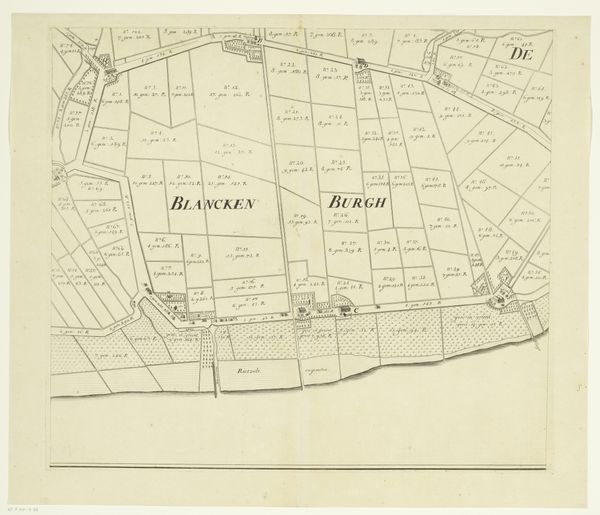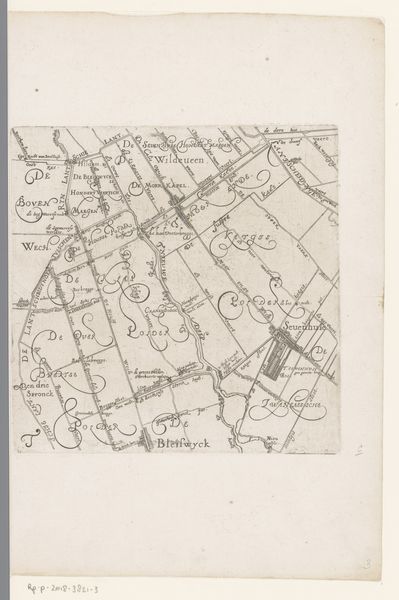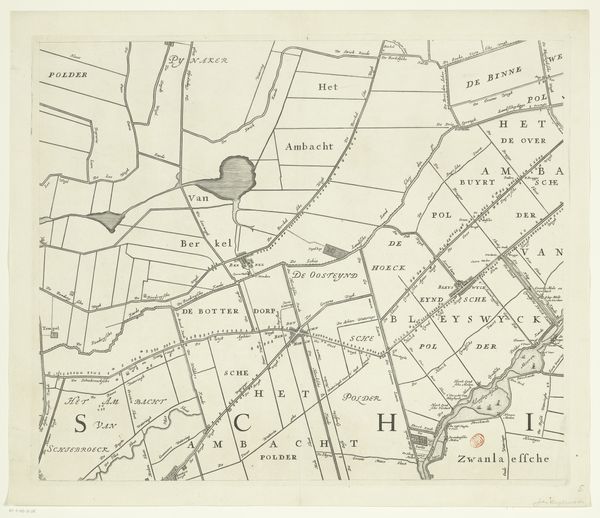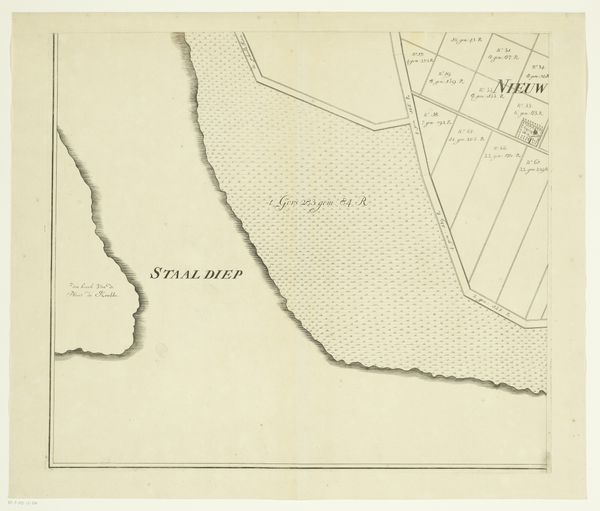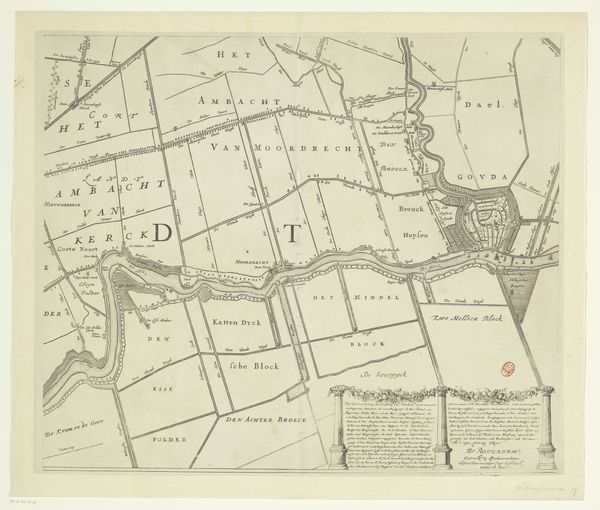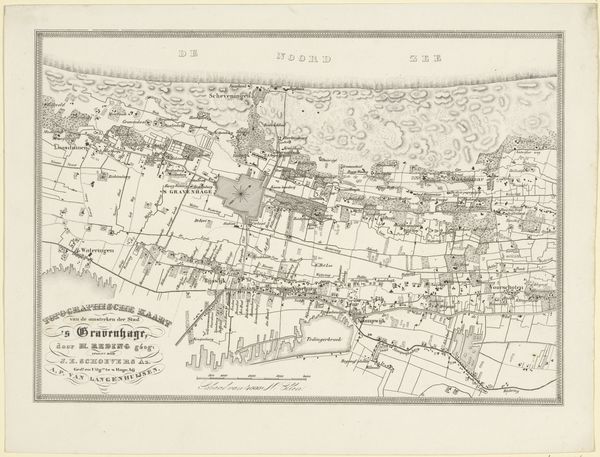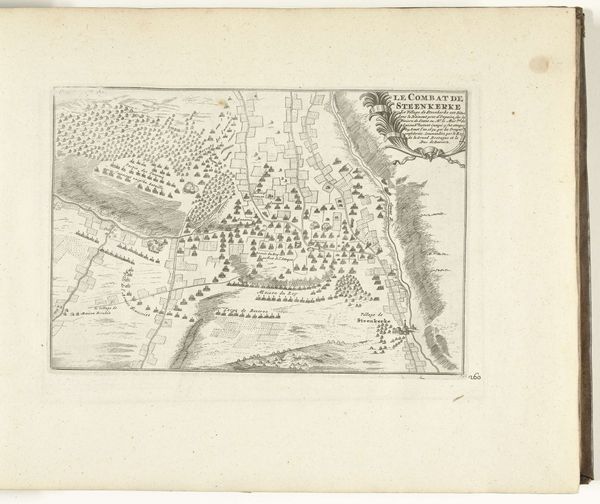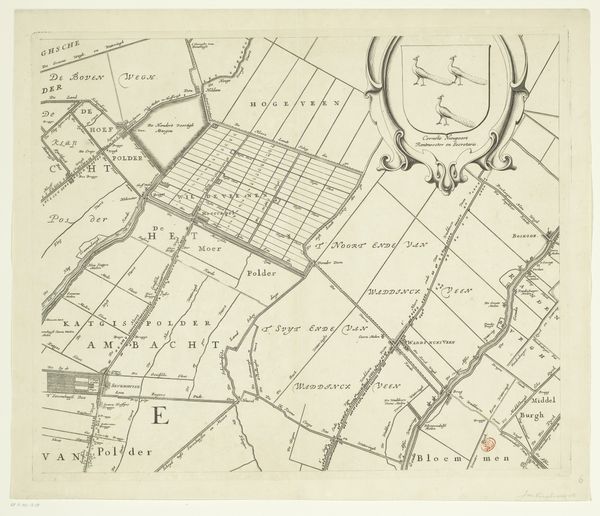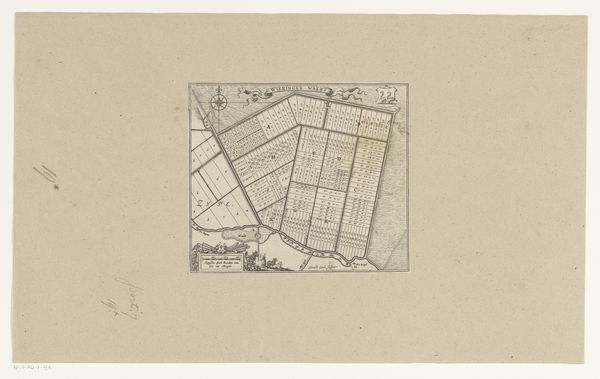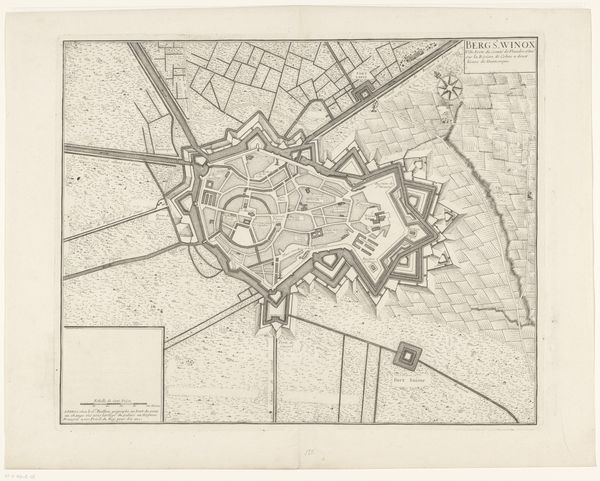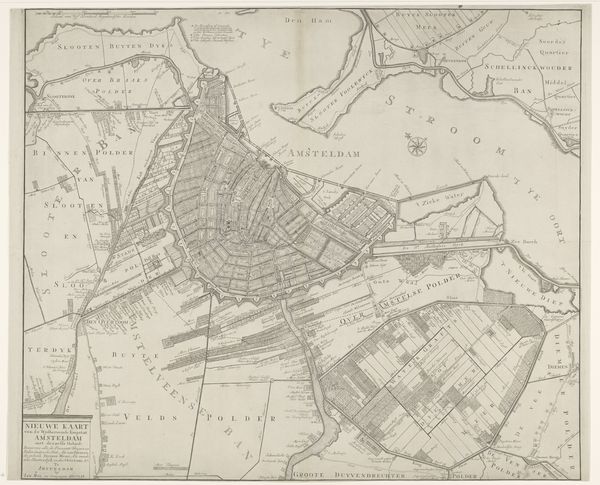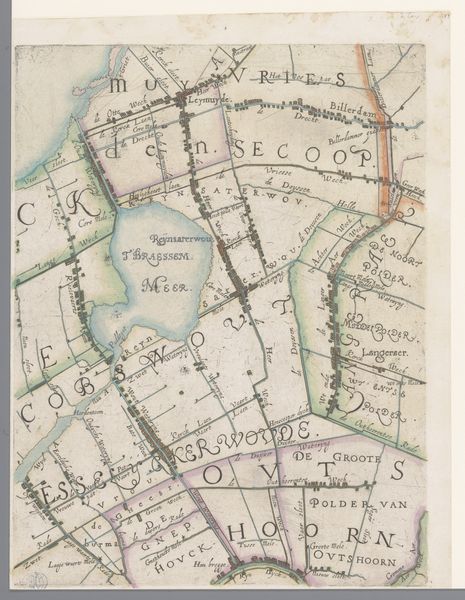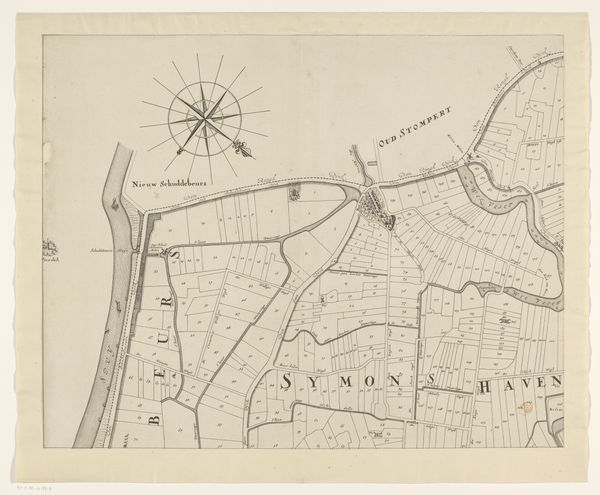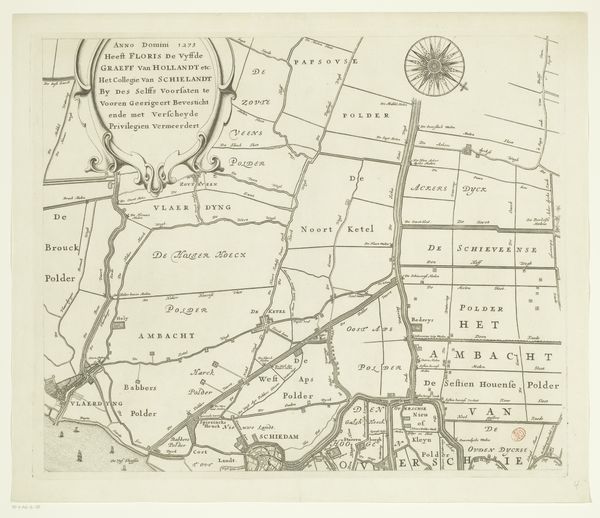
print, etching
#
dutch-golden-age
# print
#
etching
#
landscape
#
etching
Dimensions: height 495 mm, width 564 mm
Copyright: Rijks Museum: Open Domain
Editor: This etching, “Kaart van het eiland Rozenburg,” created in 1727, depicts a landscape divided into sections with numbers and writing filling the open space. I am immediately drawn to its utility; it feels like more than just an aesthetic object. How should we interpret this map through a materialist lens? Curator: That’s a keen observation. Focusing on its materiality, consider the process. This isn’t simply about representing land; it's about control and production. The etching process itself is crucial – the labor, the specialized skill, the materials like copper and acid involved in producing these maps, consider the economic systems required to produce it. What does the repetitive division of land into grids suggest to you about Dutch society at this time? Editor: It speaks to land ownership and agriculture being systematized. The very act of mapping suggests an intent to measure, divide, and potentially exploit resources. Curator: Precisely. It shows an evolving relationship between the population and the land; consider the intended consumption of the final map. Was it primarily for administrative or commercial use? Examining the paper quality, ink, and the precision of the etching can illuminate its intended audience and its practical applications, potentially related to taxation and agriculture production. Editor: So, understanding its material production provides clues about social and economic forces at play? Curator: Exactly! This map is more than just an image; it is a material artifact born from specific social and economic conditions. Think of it as a tool embedded within a larger system of resource management and colonial trade. It's exciting to explore beyond aesthetics, acknowledging the embedded value beyond the immediate artistry. Editor: That makes me rethink my initial reading! The physical materials really reflect the societal structures. Thank you for illuminating these material aspects.
Comments
No comments
Be the first to comment and join the conversation on the ultimate creative platform.
